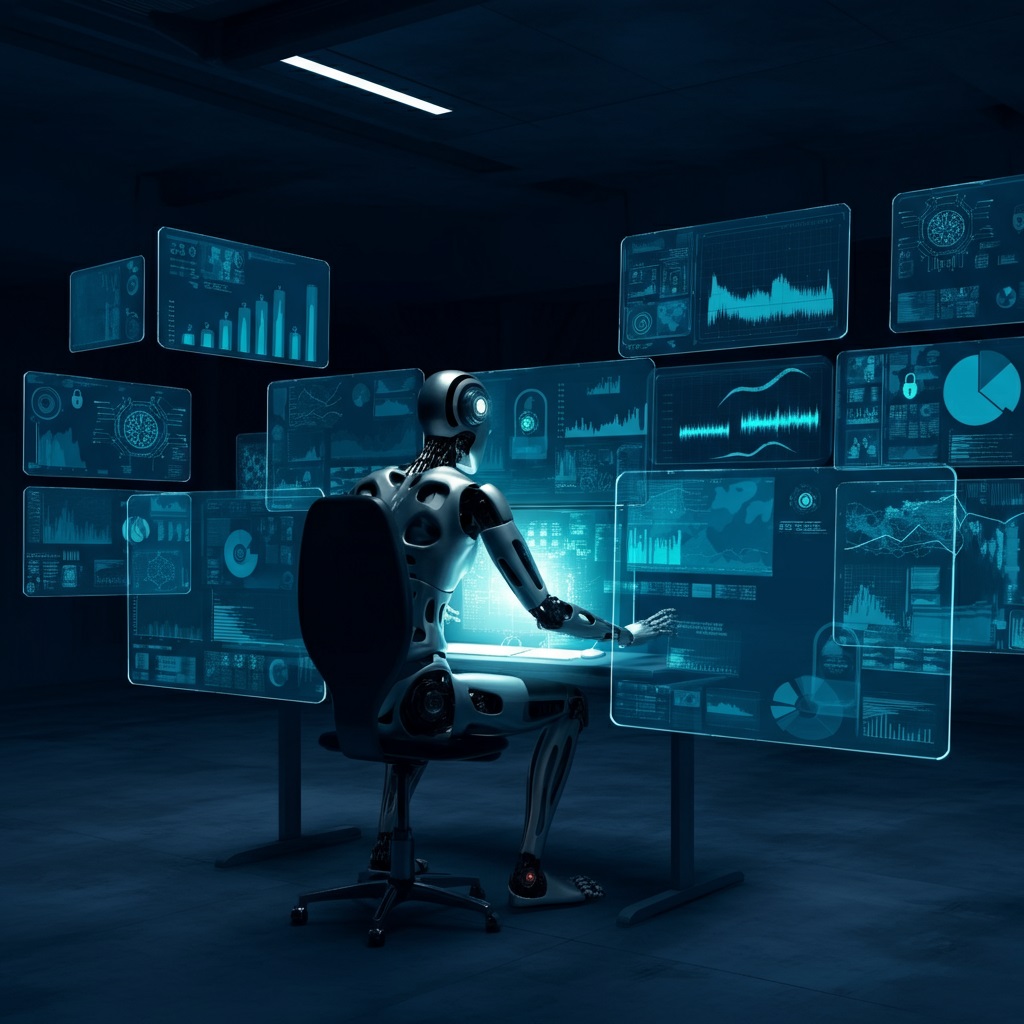Cybersecurity threats are evolving at an unprecedented rate. With businesses and personal data increasingly moving online, attackers are finding new ways to exploit vulnerabilities. Thankfully, artificial intelligence is revolutionizing the way we defend against these dangers. But how exactly does AI-powered cybersecurity work, and why is it so crucial in today’s connected world? This blog will explore the mechanisms behind AI-driven security systems and provide insights into why they are becoming indispensable for businesses and individuals alike.
The Changing Face of Cyber Threats
Before we jump into AI’s role in cybersecurity, it’s important to understand the scale and complexity of cyber threats today. Gone are the days of singular viruses that could be tackled with basic firewalls. Modern threats include:
- Ransomware that encrypts your data and demands payment for its release.
- Phishing attacks that deceive users into revealing sensitive information.
- Zero-day exploits, where attackers exploit unknown software vulnerabilities.
- Distributed Denial of Service (DDoS) attacks that overwhelm systems with traffic.
Traditional security measures, such as antivirus software or rule-based firewalls, struggle to keep up with the speed and sophistication of these attacks. This is where AI steps in as a game-changer.
How AI Transforms Cybersecurity
Artificial intelligence leverages machine learning (ML), deep learning, and various algorithms to strengthen cybersecurity systems. Here’s how it works:
1. Threat Detection in Real Time
One of AI’s standout abilities is its capacity to analyze vast amounts of data at incredible speeds. By processing behavioral patterns and network activity, AI systems can detect potential anomalies or threats in real time. Unlike traditional systems that rely on static rules, AI constantly adapts and learns, making it better at identifying new forms of malware or phishing attempts.
For example:
- Behavioral Analysis: AI can spot unusual login attempts or abnormal file transfers. For instance, if an employee suddenly downloads large files during unusual hours, an AI system may flag it as suspicious behavior.
- Anomaly Detection: Machine learning models can establish a baseline of “normal” activity and quickly identify deviations, often uncovering threats that human analysts might miss.
2. Proactive Threat Hunting
AI in cybersecurity doesn’t just react to attacks; it predicts them. By analyzing historical data, AI can detect patterns that might indicate an impending attack or vulnerability.
- Predictive Analytics: Tools like Darktrace use AI to predict how attackers might target a system based on global threat intelligence.
- Vulnerability Scanning: AI systems can identify weak points in IT infrastructures before they are exploited by malicious actors.
3. Automating Routine Security Tasks
Cybersecurity teams are often overwhelmed with repetitive tasks, such as monitoring logs or filtering false alarms. AI automates these processes, allowing human professionals to focus on higher-level strategic decisions.
- Alert Prioritization: AI filters out false positives from security alerts and ensures that urgent threats get immediate attention.
- Security Orchestration: Platforms like Splunk or Palo Alto Networks’ Cortex XSOAR automate responses to incidents, such as isolating infected devices or alerting the relevant teams.
4. Fighting Phishing with Natural Language Processing (NLP)
Phishing remains a significant problem, targeting individuals and organizations alike. AI uses NLP algorithms to analyze email content, headers, and metadata to determine whether an email is fraudulent.
For example:
- Spam Detection: AI systems like Google’s advanced email filtering can identify phishing emails with high accuracy.
- Real-Time Warnings: If a user clicks on a suspicious link, AI may warn them immediately or even block the action altogether.
5. Enhancing Endpoint Security
Endpoints like laptops, smartphones, and IoT devices are the gateways that attackers often attempt to exploit. AI strengthens endpoint security by monitoring device behavior and stopping suspicious activities.
- Device Authentication: AI-based biometric systems, such as fingerprint scanners and facial recognition, enhance user verification.
- Threat Containment: If malware is detected on a device, AI can isolate it to prevent lateral movement across the network.
Why AI Cybersecurity Matters
AI-powered cybersecurity matters not just because it’s innovative, but because it addresses real-world challenges better than traditional methods.
1. Staying Ahead of Sophisticated Attacks
Hackers are now employing AI themselves, creating malware that adapts and evolves to avoid detection. Only AI-powered systems can match this level of sophistication by identifying and blocking threats that traditional defenses can’t even recognize.
2. Handling Massive Amounts of Data
Enterprises today generate vast amounts of data daily. Monitoring such large-scale activity for threats manually is inefficient and error-prone. AI offers scalability, handling massive datasets effortlessly while ensuring consistent security monitoring.
3. Reducing Response Times
The faster you respond to a threat, the less damage it can do. AI’s ability to make split-second decisions and deploy countermeasures minimizes downtime and potential losses during cyber incidents.
4. Filling the Skills Gap
With a global shortage of skilled cybersecurity professionals, AI helps organizations maintain robust defenses by reducing reliance on human intervention for routine tasks.
5. Building Trust with Customers
Strong cybersecurity isn’t just an internal benefit; it’s a competitive advantage. Businesses that demonstrate a commitment to protecting customer data build trust and enhance their reputations.
The Future of AI in Cybersecurity
The integration of AI into cybersecurity is still evolving, but the future looks promising. Here are some key trends to watch for:
- AI-Powered SOCs (Security Operation Centers): Advanced systems that fully leverage AI for end-to-end threat monitoring and incident response.
- Autonomous AI Systems that can operate independently without human intervention to detect and neutralize threats.
- Ethical AI Practices to ensure that AI algorithms don’t introduce biases or privacy issues, particularly when dealing with user data.
These developments will set the stage for an even more secure digital landscape.
Read More👉 Everything About the Moore’s Law
Building Smarter Cyber Defenses with AI
AI-powered cybersecurity is not a luxury; it’s a necessity in a world where threats are becoming increasingly sophisticated. Whether it’s safeguarding sensitive data, protecting IoT devices, or enabling faster response times, AI offers solutions that are smarter, faster, and more resilient than traditional tools.
For businesses looking to stay ahead in the cybersecurity race, investing in AI-based solutions is no longer optional. It’s the only way to ensure your defenses are as dynamic and robust as the threats they counter.
Are you ready to explore how AI can transform your cybersecurity strategy? Stay informed, stay secure, and make the leap into smarter, AI-driven protection.

